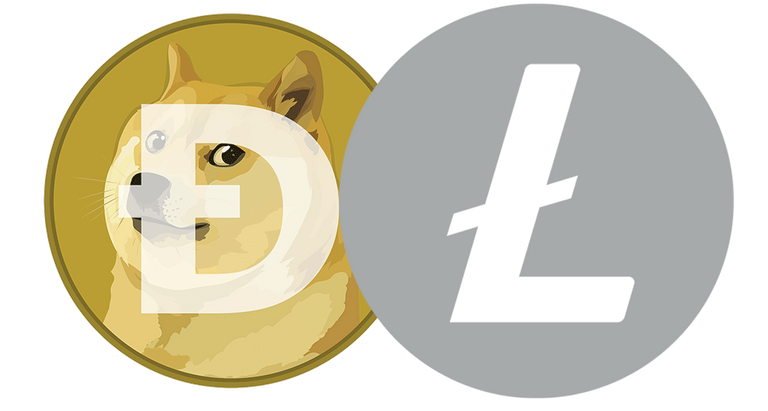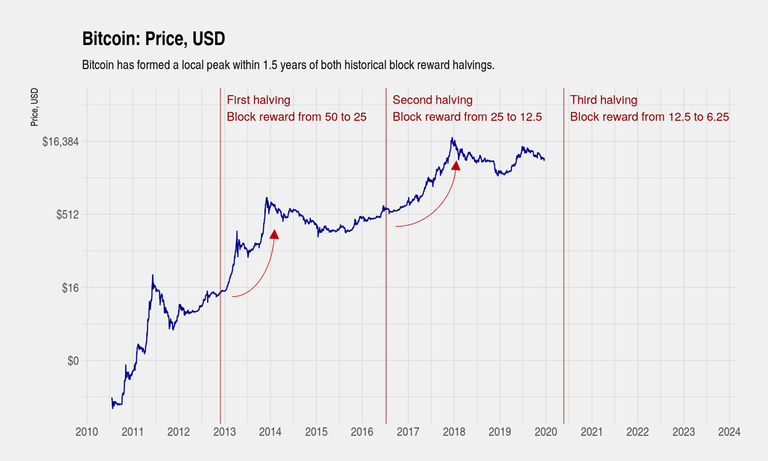As a bit of a crypto "veteran", I find it quite chaos to have more than 7000 cryptocurrencies out there, and most of them are nothing other than scams. And as a kind of celebration of my fourth birthday on Hive, I've decided to start a series of educative articles explaining the most important and most serious crypto projects on the market.
These articles will be a bit detailed and rather long, so if you like my post, expect more of it in the future.
Today, I'm gonna bring you an in-depth review of one of the oldest cryptos on the market. One that has been around for about 10 years with the announced slogan of "Silver to Bitcoin's Gold".
It hasn't yet received its fair share of price pump but probably will in due course. I'm of course talking about Litecoin...

Contents:
- What is LiteCoin?
- Who is Litecoin's creator Charlie Lee?
- How Litecoin works
- Litecoin & Dogecoin combo
- Litecoin's tokenomics
- Litecoin as a privacy coin...
- Controversies
- Conclusion
What is LiteCoin?
In all simplicity, Litecoin is a p2p cryptocurrency that was created by Charlie Lee on October 13, 2011, for a very simple purpose and that is to be a medium of exchange and a store of value. This is the same philosophy that Bitcoin holds, and Charlie was smart enough to avoid competing against the king. In fact, he continuously advises people to consider investing in Bitcoin before any other cryptocurrency, including Litecoin.
So, why did he create LTC in the first place? you might be asking
Well, as the name suggests, Litecoin was created to be just a lighter version of bitcoin for those people that couldn't afford to buy BTC. And to that end, LTC has honestly been quite effective.
Over the last10 years, Litecoin has been able to maintain its position among top-ranking cryptos, which led market enthusiasts to give it the title of "the silver to Bitcoin’s gold".
Who is Litecoin's creator Charlie Lee?
Charlie Lee was born in Ivory Coast and moved to the US when was a 13-year-old child.
He was obsessed with programming and managed to hold a master's in computer science from MIT.
In 2007, he began his career working for Google as a software engineer and was part of the team that coded Chrome OS.
In 2011, he began dabbling in cryptocurrency in his spare time while employed at Google and ended up releasing LTC as a new and lighter version of Bitcoin.
One fun fact about Charlie is that he was a seasoned poker player, and that might partially be why he got involved in crypto at such an early time.
In 2013, Charlie left Google and started working at Coinbase just a few months before they listed his coin on their exchange.
In 2017, Charlie was accused by some skeptics of manipulating LTC's price with his tweets which led him to decide to sell ALL his LTC holdings except for what he needs for testing things during working on Litecoin's code. However, that decision was counter-effective, as many argued that charlie was dumping his coins on the community especially given the fact that he sold his holdings in December 2017, meaning at the peak of the previous bull market.
Many also accused Charlie of planning to leave the Litecoin project, and they even titled him as "the most hated person in cryptocurrency".
That said, Charlie never left Litecoin. In fact, he quit his job at Coinbase and dedicated his full time to LTC.
He is now the head of LTC core team developers and is the managing director of the Litecoin Foundation (a non-profit organization based in Singapore focused on the progress of Litecoin adoption)
How Litecoin works
Litecoin is a fork of Bitcoin Core and was meant to be a more reachable coin for people. In order to achieve that goal, Litecoin was designed with a different mining algorithm from Bitcoin's called SCrypt.
This algorithm was designed in a special way to make it possible for a regular computer to mine LTC which significantly reduces the advantage of those capable of purchasing expensive specialized computers (ASIC hardware). The other purpose of the SCrypt algorithm was to make the Litecoin blockchain more decentralized as anyone would be able to take place the mining activity.
Unfortunately, however, the increasing value of LTC pushed those greedy ASIC manufacturers to modify their devices making them able to handle the Litecoin blockchain and effectively acquiring most of the hash power. And since that time, the Litecoin blockchain has become gradually more centralized with only a few huge mining pools taking over most mining operations.
Litecoin & Dogecoin combo:
Would you believe me if I said that Litecoin is the savior of Dogecoin?
Well, this is actually a reality...
The story started shortly after Dogecoin launched in 2013, and at that time there were only a few miners on the Doge blockchain because it was not profitable to mine. This short of miners put the entire Doge network under a 51% attack risk and threatened it to fall.
Charlie noticed what was happening with Dogecoin and decided to take the initiative to approach Doge founder "Jackson Palmer" and pitch the idea of "merge mining".
In a nutshell, Merge mining is a technique that allows to mine two cryptocurrencies at the same time without using any extra power. This would make Litecoin & Dogecoin like a united entity, where a miner of one is a miner of the other by default.
Palmer was happy to agree to the proposal, simply because it protects the Dogecoin network from the inevitable collapse and Charlie was happy too as it adds an additional incentive to mine Litecoin. It was a win-win for both parties.
Since that time, LTC & Doge have been radically related, meaning if LTC falls, Doge goes down with it but as long as LTC exists, so too will Doge.
Jackson Palmer described this relationship with the quote:
Dogecoin is merged at the hip with Litecoin

Litecoin's tokenomics:
As mentioned, Litecoin is a fork of Bitcoin Core which is designed to be a cheaper and lighter version of Bitcoin. And in order to achieve its goal, Charlie lee implemented some modifications to the code which includes:
- Quadrupled the Max Supply from 21M to 84M
- Decreased block generation time by a quarter (from 10 minutes to 2.5 minutes)
- Changed the mining algorithm (SCrypt, instead of SHA-256)
This last modification was meant to make the mining operation more decentralized, as it prevented specialized computers (ASIC) to have the edge over regular ones. However, that didn't work for long because ASIC manufacturers managed to update their devices making them able to mine LTC much more effectively.
Looking into Hash Rate Distribution now, you can see that there are about 5 mining pools acquiring the lion's share of mining activity.
Just like Bitcoin, Litecoin has a 4-year halving cycle, which cuts the amount of LTC miners get from each block in half every four years.
The first halving happened in August 2015 which reduced the block reward from 50 LTC to 25 LTC.
The second halving occurred in August 2019 cutting the reward in half again to 12.5 LTC
The next LTC halving is expected to occur in August 2023, which will decrease the block reward to only 6.25 LTC
The average LTC transaction takes about two minutes to complete and costs a few cents. The overall efficiency of the Litecoin blockchain works out to about 56 TPS (Transaction per second). Unfortunately, this humble performance for Litecoin makes it fails as a method of payment compared to other cryptos such as BNB which has 1.4 M TPS, or Ripple with 1500 TPS.
Another interesting thing about Litecoin is that it always previously receives all upgrades which are scheduled to be implemented on Bitcoin. And because of the similarity between the two coins down to their code, Litecoin has been titled by many as bitcoin's test net.
Those upgrades include:
- Segwit
- Lightning Network
- Atomic swap
And it might be most interesting that there is actually another big upgrade to Litecoin in preparation right now and is expected to be implemented very soon.
This upgrade is called "Mimblewimble" and is meant to add privacy features to the Litecoin network (something I'll touch on in a bit ).
Litecoin as a privacy coin:
Privacy has long been seen as a controversial feature in cryptocurrency. While many see it as a human right, others argue that it is nothing but a way for criminals to get paid for their bad activities.
This last view is the main reason that several crypto exchanges are being obligated by regulators to delist privacy-focused coins such as Monero and Zcash.
However, it seems like Litecoin is preparing to present something that will change the rules of the game forever...
This can be possible thanks to the cooperation between The Litecoin team along with some external developers to implement a high-advanced privacy technology called "Mimblewimble" which is the same protocol some other privacy coins like Grin adopt.
Without focusing on the name which is ridiculously inspired by the Harry Potter spell that stops people from spilling secrets, Mimblewimble is one of the most effective technologies to hide the wallet address involved in a transaction.
And what makes Litecoin's implementation so special is that it will be optional, i.e the user has the choice of whether his transaction will be transparent or hidden, and moreover, crypto exchanges will be under no obligation to adopt the privacy feature meaning there is no risk of LTC getting delisted the same way other privacy coins have recently been.

Controversies:
So far, I've presented the Litecoin project in a positive light, but it would be remiss of me not to mention its negative aspects too. Well, Liteccoin is not perfect and there are many crypto experts who look at it as only an overrated testnet of Bitcoin.
Their argument is quite simple: If Litecoin is a lighter version of Bitcoin, then it would be far much safer to invest in Bitcoin itself.
Moreover, there no denying that litecoin fails in comparison with other cryptos on the market in terms of speed and efficiency. It has even failed to achieve its initial goal to make mining available for all people with regular computers.
And last but not least, we have Charlie selling his coins back in 2017 which left really bad optics for the project and caused many of the crypto community to lose their faith in Litecoin.

conclusion:
Litecoin is one of a very few alts that has established itself in the first ranks for ten years ago and still preserves it. It's a cryptocurrency that has one of the largest communities on record and the team behind it seems to be serious about making it not just survive but thrive.
Adding the privacy feature in an optional manner is a very bullish case and there is even a possibility that Litecoin is going to become the best privacy coin on the market. Moreover, there are several corporates such as Grayscale and others paying much attention to LTC and it seems like we could see some explosive institutional demand for it in the foreseeable future.
Issues and controversies do exist with Litecoin. But if you look fairly, this is just the case with most other cryptos too.
And in my humble opinion, whatever skeptics say, I believe that Litecoin is here to stay...
What do you guys think about Litecoin?
I'm keen to read your comments and thoughts...
You can also find me on these platforms:
Twitter
Publish0x
1
2
3
4
5
6
7
8
9
10
PS, Unless otherwise stated, all images in this post are either my own design or from free photo-sharing sites (e.g. pixabay.com)


Congratulations! This post has been upvoted by the @blurtcurator communal account,
You can request a vote every 12 hours from the #getupvote channel in the official Blurt Discord.Don't wait to join ,lots of good stuff happening there.
Congratulations, your post has been curated by @r2cornell-curate. Also, find us on Discord
Felicitaciones, su publication ha sido votado por @r2cornell. También, encuéntranos en Discord